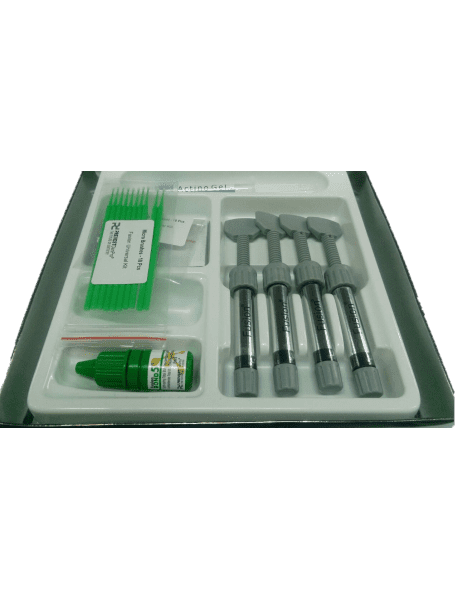Home » Thermoform Inserts: Properties, Applications, and More
Thermoform Inserts: Properties, Applications, and More

Thermoform inserts are a versatile and essential component in various industrial and consumer applications. They are produced through a process called thermoforming, where a plastic sheet is heated to a pliable forming temperature, formed to a specific shape in a mold, and trimmed to create a usable product. In this blog, we’ll delve into the properties, applications, and other relevant aspects of thermoform inserts.
Properties of Thermoform Inserts
- Material Flexibility: Thermoform inserts can be made from a wide range of plastics, including like PVC, PET and HIPS. Each material offers different characteristics like rigidity, clarity, and resistance to impact and chemicals.
- Durability: These inserts are known for their strength and durability. They can withstand significant impact and are resistant to many chemicals, making them suitable for protective purposes.
- Lightweight: Despite their strength, thermoform inserts are relatively lightweight, which is beneficial for reducing shipping and handling costs.
- Customizability: The thermoforming process allows for high levels of customization. Inserts can be formed into virtually any shape and size, accommodating a wide range of products.
- Aesthetic Appeal: Thermoform inserts can have smooth or textured surfaces, and can be transparent or colored. This makes them visually appealing and suitable for display purposes.
Applications of Thermoform Inserts
- Packaging Solutions: One of the most common uses of thermoform inserts is in product packaging. They are used to securely hold products in place, often seen in the packaging of electronics, cosmetics, and pharmaceuticals.
- Medical Industry: In the medical field, thermoform inserts are used for packaging sterile medical devices and equipment due to their ability to be sterilized and their contaminant-free nature.
- Automotive Industry: They are also used in the automotive industry for creating durable and lightweight parts, such as dashboards, door panels, and interior consoles.
- Food Industry: Thermoform inserts are used for food packaging, given their ability to be sealed for freshness and their compliance with food safety standards.
- Retail Display: Retail industries use these inserts for aesthetically pleasing product displays that protect the product while showcasing it effectively.
Advantages and Considerations
- Cost-Effective: Thermoforming is a cost-effective production process, especially for medium to large runs, making thermoform inserts a budget-friendly option.
- Environmental Considerations: Many thermoform plastics are recyclable, which is a crucial consideration in today’s environmentally conscious market. However, the choice of material and recycling programs available can affect this aspect.
- Design and Prototyping: The flexibility in design makes thermoform inserts ideal for custom applications. Rapid prototyping is often possible, allowing for quick turnaround from design to production.
- Limitations: While versatile, there are limitations in terms of the depth and complexity of shapes that can be achieved compared to other forming processes like injection molding.
Conclusion
Thermoform inserts play a crucial role in various industries due to their unique properties like durability, lightweight nature, and customizability. Their applications range from packaging to automotive parts, showcasing their versatility. When considering thermoform inserts for a project, it’s essential to weigh factors like material properties, environmental impact, and design requirements to ensure they meet the specific needs of the application. With ongoing advancements in materials and thermoforming technology, the potential uses and benefits of thermoform inserts continue to expand.
Why Co-Packaging Becomes Critical During the Holidays As the holiday season approaches, packaging teams are under pressure to deliver high volumes of promotional sets, combo
Holiday demand starts long before December. So should your packaging. For B2B and D2C brands alike, Q4 is the most critical—and most chaotic—shipping window of
The Challenge of Multi-SKU Holiday Programs During the holiday season, brands often shift from selling single products to curated sets, bundled assortments, and promotional kits—each
Rigid boxes are the gold standard of premium packaging. Whether used for cosmetics, electronics, fashion, or high-end subscription kits, rigid boxes do more than protect
Understanding One-Piece FOL and Three-Piece Bike Shipping Boxes Choosing the right box style is essential when shipping bicycles—especially for brands, manufacturers, and distributors focused on
Corrugated boxes are essential to shipping, retail, and e-commerce—but when you introduce custom printing, the stakes (and the opportunities) rise. Print isn’t just about looks—it’s
Home » Thermoform Inserts: Properties, Applications, and More
With the rise in accidental medication ingestions by children each year, it has become increasingly important to implement child-resistant packaging. Among various packaging solutions, child-resistant
Polyethylene terephthalate, commonly abbreviated, stands out in the packaging industry for its versatility and environmental friendliness. Recognized as the most widely recycled plastic worldwide, this
In our daily lives, we come across a plethora of pharmaceutical products, either in our personal capacity or via someone close to us. In this